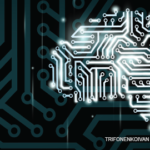 Editor’s note: EULAR 2020, the annual European Congress of Rheumatology, which was originally scheduled to be held in Frankfurt, Germany, starting June 3, was moved to a virtual format due to the COVID-19 pandemic.
Editor’s note: EULAR 2020, the annual European Congress of Rheumatology, which was originally scheduled to be held in Frankfurt, Germany, starting June 3, was moved to a virtual format due to the COVID-19 pandemic.
EULAR 2020 e-CONGRESS—Medicine is often at the forefront of technological revolutions in society. Indeed, the accomplishments of clinicians and researchers can demonstrate what’s possible when theory is translated into practice—from bench to bedside. One area currently of great interest is how artificial intelligence may be able to assist physicians with patient care. During the 2020 European e-Congress of Rheumatology, June 3–6, a fascinating session, titled Artificial Intelligence and Machine Learning in Rheumatology Imaging: Are We Ready?, explored this topic in great detail and discussed work being conducted around the world.
The session started with a synopsis of the history of, and description of terms that apply to, artificial intelligence and machine learning. Artificial intelligence is the ability of a computer to perform tasks that generally require the intellect of a human being. Machine learning is an application of artificial intelligence focused on how computers learn from data and involves the intersection of statistics and computer science through the use of efficient computing algorithms.1 Neural networks are a form of machine learning.
In 1943, the neuroscientist Warren McCulloch and the logician Walter Pitts proposed the first computational model of a neuron. Each McCulloch-Pitt neuron had binary inputs and binary outputs (i.e., 0 or 1). Inputs could be excitatory (i.e., positive) or inhibitory (i.e., negative). The sum of the inputs could then be calculated for a connected chain of neurons. If the final sum was above a pre-specified threshold, then the output was 1. If the sum was below that threshold, it was 0.2 From this model, neural networks have continued to evolve and become more complex, but always with the foundational concept that neural networks are a series of algorithms that identify relationships in a data set through a process that mimics how the human brain functions.3
Imaging-Based Scoring
Several groups that have applied machine learning techniques to problems facing rheumatologists presented their findings in the EULAR session. Thomas Deimel, MD, Division of Rheumatology, Medical University of Vienna, Austria, offered a presentation on autoscoRA, a deep learning model that enables the automatic scoring of the radiographic progression of rheumatoid arthritis (RA).
Standardized scoring systems of radiographs, such as the Sharp/van der Heijde score, are time intensive, require specially trained staff and have a fair amount of intra-reader variation. Dr. Deimel and colleagues used a data set of more than 5,000 hand radiographs from 640 adult RA patients to train, validate and test the automated, deep-learning computer system.4 Using the human-rated Sharp/van der Heijde score as the ground truth, only 1.8% of metacarpal phalangeal (MCP) joints and 1.7% of proximal interphalangeal (PIP) joints scores calculated by the deep learning system differed from the Sharp/van der Heijde score by more than one point. The researchers note this is the first work to automate manual scoring on a large scale. Future work will further refine the system’s accuracy.

